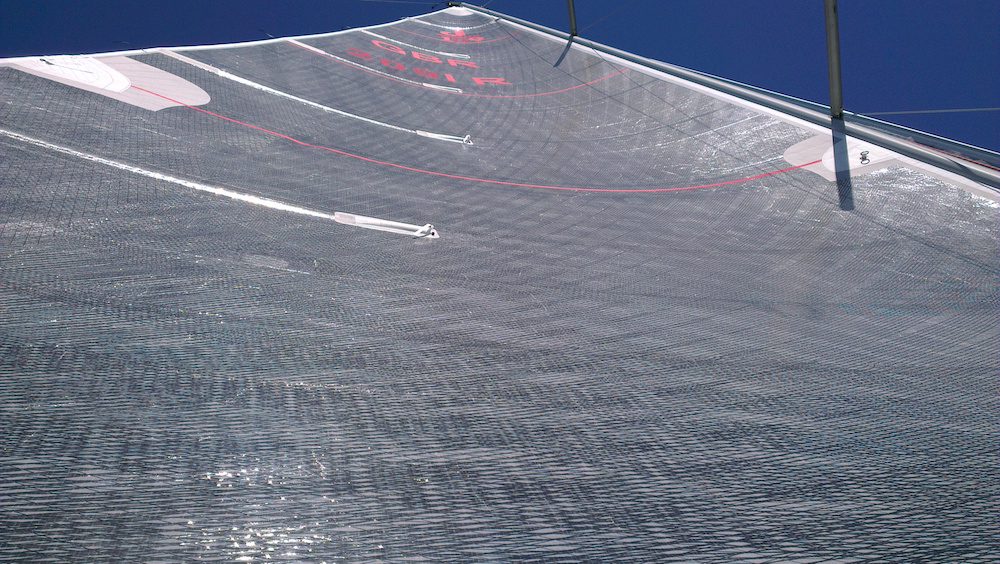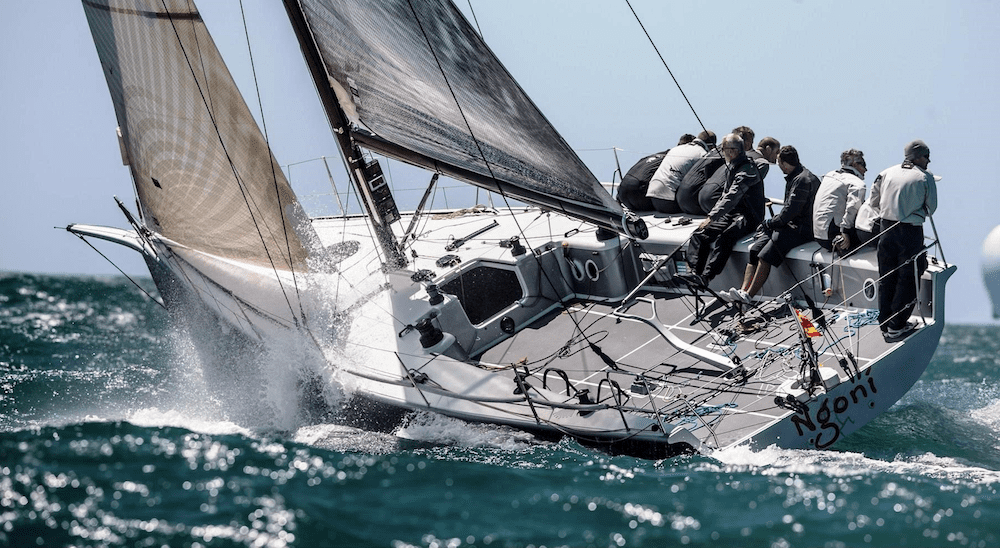
Racing Tips - Upwind Trimming
“Upwind Trimming - Mainsail”

Underpowered
Keep the Air Flowing
If you are sailing in light winds and feel underpowered, it’s important to keep the wind flowing over the sail. The top tell tale is your best guide for this - aim to keep it flying, even in the very lightest conditions, and progressively increase the stall until you reach 50-70% maximum power.
As the wind drops the main leech will close and the forestay will tighten, so give the mainsheet a little ease to open the top of the main and keep the top batten parallel to the boom. If the pressure stays light you can also try pulling in the traveller to bring the boom back to centreline.
If the forestay gets too tight, ease the backstay to around 15%, although remember that this will close the main leech and require a little sheet ease. When you get to the point that you need to soften the forestay more than this, it’s time to go down a rig setting so that your usable backstay range will become 5-20% again.
Always make small adjustments for good control - each trim change you make will have a primary effect, but also secondary implications. It is important to consider the bigger picture as one adjustment might improve one aspect of your trim, but impair another.
Overpowered
Trim to the Heel Angle
When the wind builds up and you become overpowered, aim to keep the boat at its optimum heel angle, depending on what you want to achieve. If you want to go higher, increase the power and if you want to go faster, depower to control the heel angle.
As the wind builds and you move away from your maximum power state, the main leech will open and the forestay will sag more. A little snug on the backstay will bring the forestay back in check and open the main leech helping the boat to accelerate. If the pressure remains, then the main can be snugged a little amount to bring the batten back parallel with the boom and you can pull the outhaul to the band, but make sure to give it a little ease if the wind drops.
As the pressure continues to build you can alternate dropping the traveller and increasing backstay tension. Keep monitoring the top batten and keep it parallel with the mainsheet. By the time the traveller gets down to the centre line the backstay will be at around 35% and the mainsail will be starting to get a little flat, which indicates it’s time to go up to the next rig setting. At this point you should also snug the cunningham but only to remove creases in the lower luff. If the main starts to backwind, increase mainsail twist so that the boom can be kept inside the quarter. This will keep the mainsail working rather than flapping. Once the traveller gets below the centre line the vang can be progressively tensioned to help control the mid leech and really flatten the bottom third of the main.
Calibrate, Record and Learn
By having clear targets for what you are trying to achieve in terms of forestay tension, mainsail depth and twist, you will be able to make the right adjustments and keep communication open amongst the crew. Record everything you learn about your boat’s rig and trim settings so you can recreate the setup quickly for any conditions and compare your performance against previous results.
Rig Set Up
Rig tuning is essentially just trimming for your mast and it is worth spending time to get this right as it forms the basis for any rig adjustments you make up and down the wind range. You might be able to find this information in a tuning guide for your class, or your sailmaker should be able to give you some fast settings. A well set up rig will make it much easier to sail through the wind range and, rather than fighting the boat, you’ll be able to make small adjustments to maintain top speed. The final 10% of speed will not be available to you with a poorly set up rig so it is worth spending the time to make sure it is right.
A Good Race
Overall, understanding mainsail trim and the impact it can have on your upwind performance is crucial to a good race. Finding your maximum power settings will give you a good benchmark from which to make adjustments according to the wind conditions, and lots of note taking will help you to improve race to race throughout the season. Every boat is different and it takes time to find the optimum mainsail settings for all of the different weather conditions and race formats, but if you put in the effort to fully understand your mainsail trim setup, it will pay dividends on the race track.
For more information please visit www.ultimatesails.co.uk
Now that you know about upwind trimming, read our top tips on Downwind Trimming too.
